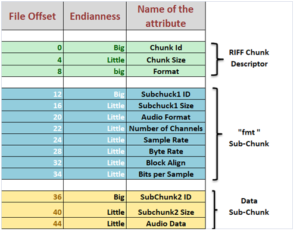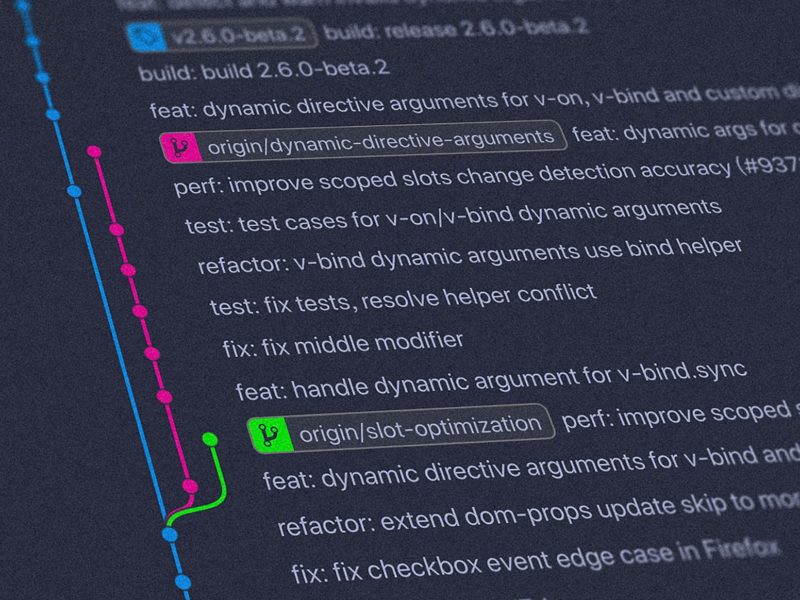What is WAVE file?
WAVE is a audio file format that is used for storing audio bits in a file. It has evolved from the Microsoft RIFF specification for storing digital audio format. Although WAV can store compressed audio, it is usually known for storing uncompressed Linear PCM encoded audio. This is a standard audio format used on Windows computers. Usually, it uses .wav or .wave as file extension.
WAVE Specification

Details about Field Attribute
The WAVE file format start with RIFF header. Then it consists of two subsequent sections called “fmt ” subchunks and “data” subchunks. The “fmt ” subchunks keeps the information about the audio data format. The “data” subchunks describes the size information and the actual audio data.
| Attribute | File Offset | Size | Description |
|---|---|---|---|
| Chunk ID | 0 | 4 | ASCII text “RIFF” (0x52494646) |
| Chunk Size | 4 | 4 | File size – 8 bytes ( 8 bytes represent Chunk ID and Chunk Size) |
| Format | 8 | 4 | ASCII text “WAVE (0x57415645) |
| Subchunk1 ID | 12 | 4 | ASCII text “fmt ” (0x666d7420) |
| SubChunk1 Size | 16 | 4 | Length of the format data |
| Audio Format | 20 | 2 | Type of Format, PCM = 1 |
| Number of Channels | 22 | 2 | Number of Channel, 1 = mono, 2 = stereo |
| Sample Ra | 24 | 4 | Sample rate. Number of Sample per second (Hz). Example. 16000, 32000 |
| Byte Rate | 28 | 4 | (Sample Rate * Bits per Sample * Number of Channels) / 8 |
| Block Align | 32 | 2 | (Bits per Sample * Number of Channels) / 8 |
| Bits per Sample | 34 | 2 | Audio bits per sample |
| SubChunk2 ID | 36 | 4 | ASCII text “data”. (0x64617461) |
| SubChunk2 Size | 40 | 4 | Size of the data subchunks |
| Audio Data | 44 | – | Actual audio data |
Other Details
In the wave format specification there can be different chunk sections. As mentioned above “data” is one of the chunk in a basic WAV file. But sometime other type of chunk section can appear. For example, in some WAV file a LIST chunk can be present which can provide different information such as author, company, copyright information etc.
If you are interested in code, please find a generic WAV file parser information here.



Thanks for the nice article! It was helpful to me for just getting the quick gist of the format.
I wonder if you mind adding one small thing – code that reads a WAV file should ignore chunk types that it doesn’t know about without failing to parse.
The reason it matters is that we want WAV readers to successfully handle files that have other chunks besides “fmt” and “data”.
Sure, I will try to fix that